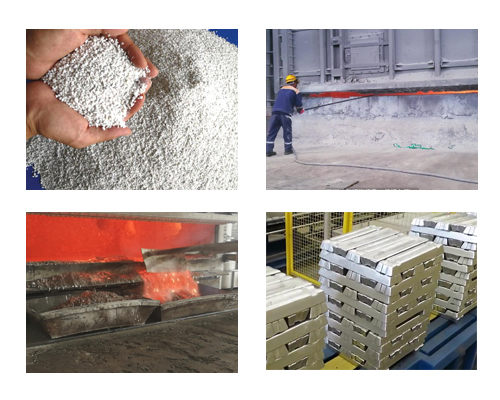The slagging and degassing methods in the smelting process of aluminum and aluminum alloys can generally be divided into flux covering and inert gas protection methods; chemical reaction and adsorption methods, namely flux and gas refining methods; non-adsorption methods, mainly including vacuum and CFF filtration methods. In addition, according to different refining purification media, it can be divided into solid flux refining method and gas refining method. According to the different process, it can be divided into furnace refining, online refining outside the furnace and CFF filtration purification.
The various purification measures currently used cannot achieve a 100% slag and gas removal rate. In the smelting process of using electrolytic aluminum liquid to directly produce aluminum processing billets, three refining and two filtering must be carried out.
Refining is protected by covering agent, using cryolite-containing nitrate or fluoride salt non-toxic solid refining agent or nitrogen sprayed powder refining agent for refining and purification to remove non-metallic inclusions in the melt, and part of it can be removed at the same time Gas and alkali metals.
The slagging and degassing methods treatment can greatly reduce the slag content of the smelting furnace and the work load of the furnace, which is beneficial to the smelting of the alloy and improves the original purity and cleanliness of the melt.
In the smelting process, the purification of the melt in the furnace is mostly used in the refining of the mixing furnace by the flux purification method, the inert gas spray flux purification method and the active gas (nitrogen and chlorine mixed gas) purification method. The latter two methods are mostly used for refining in static furnaces, but in the continuous production of cast-rolled strips, the nitrogen and chlorine mixed gas purification method should be used to prevent solid flux and slag from entering the melt.

